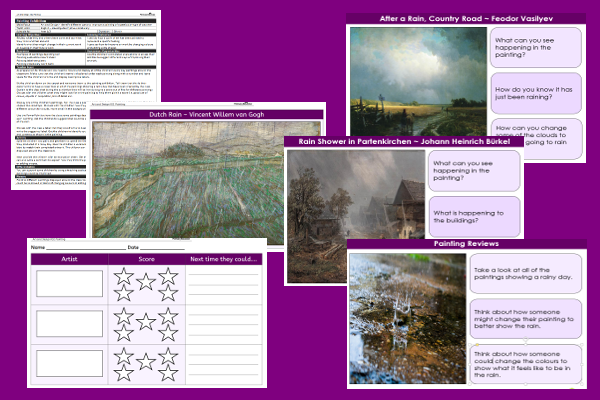Lesson Six – Painting Exhibition

This art and design teaching pack for Key Stage One gets the children to identify and record some of the different ways that can be used to improve a painting showing a landscape on a rainy day.
The class can explain how to improve the use of colours and brush strokes in artwork to evoke ideas and feelings to show what it is like to be outside in the rain.
Download this teaching pack including a lesson plan, classroom activities and an interactive presentation to teach the children to identify and record some of the different ways that can be used to improve a painting showing a landscape on a rainy day
Activities in this teaching pack include display posters to evaluate paintings depicting the rain to describe colour shades and brush techniques and a template to review artwork of a landscape affected by the rain and suggest improvements to the colour shades and brush techniques.
The interactive presentation gets the children to explore different ways of improving a painting of showing a landscape on a rainy day.
This lesson is part of a art and design scheme of work to get the children to practise different techniques of painting scenes depicting a specific type of rain to simulate natural phenomena in a range of different landscapes. There are teaching activities for shared learning, differentiated worksheets to support independent learning and interactive presentations to introduce concepts and key skills.
-

Garden Numbers
Identify and model some of the different calculation techniques that can be used when adding pairs of single digit numbers
-

Summer Stories
Practise composing and presenting narrative stories with familiar settings to illustrate the events and experiences that could happen during the summer
-

Fraction Numbers
Investigate how to use concrete equipment, diagrams and calculations to identify and record the matching fractions of different numbers
-

Family Holiday Lists
Explore how to compile sentences punctuated using commas to list some of the special things that families can use, complete and experience on a holiday
